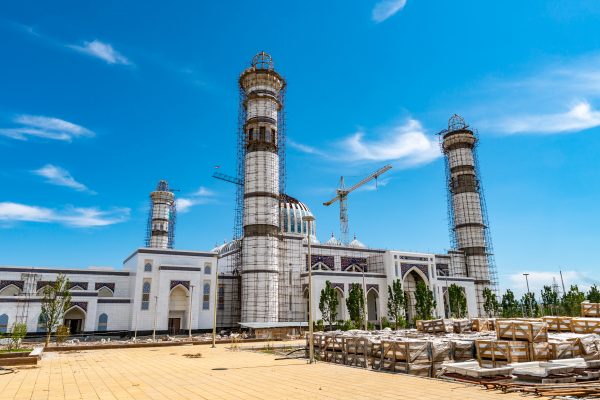
Tajikistan is located in a dangerous neighborhood, sharing a long border with Afghanistan that is a growing concern amid the imminent U.S. withdrawal. While the United States engages with Tajikistan on such security issues, the government of Tajikistan continues to operate under the fallacy that security requires strict control of religion, justifying gross violations of religious freedom and facilitating a deeply counterproductive strategy for preventing and countering violent extremism.
Given these circumstances, U.S. assistance to Tajikistan should come with conditions, and should not ignore or condone domestic policies that generate the kinds of grievances that contribute to radicalization. Instead, the U.S. should promote and directly incorporate religious freedom training as a requirement to receive aid. Research has found such training to be an effective antidote to violent extremism, and international bodies like the Organization for Security and Cooperation in Europe (OSCE) and the United Nations have recommended it as best practice.
President Emomali Rahmon, who last year won a fraudulent reelection with a staggering 91 percent of the vote, promotes a monolithic, state-controlled version of Islam that punishes non-conformity. The government has closed more than 2,000 mosques since 2017, converting many into cafes, movie theaters, or factories — even as it ironically prepares to open the largest mosque in Central Asia, able to accommodate more than 150,000 worshippers. Such large central mosques are staffed by imams appointed and paid by the state. The government dictates or approves the content of sermons, often with the inclusion of explicit praise for the Rahmon regime.
The intended message is clear: The only acceptable form of Islam is official, highly centralized, and nationalistic.
Tajikistan’s extremism laws are also vague and expansive, enabling the government to criminalize most speech or behavior it opposes. Security forces round up young men with beards and forcibly shave them, while women who wear hijabs are publicly shamed or even denied basic services like medicine and education. The government has also targeted political opponents, critical journalists and media outlets, and even naïve social media users who “like” content deemed to be extremist. These individuals are funneled into a decrepit and overcrowded prison system, cramming violent Islamists together with many who are falsely imprisoned.
Enjoying this article? Click here to subscribe for full access. Just $5 a month.
The Rahmon regime regularly identifies political opposition with extremism and terrorism. This calculus, which sets a monolithic state-approved religion against an exaggerated host of frightening radicals, has been counterproductive. Studies show that increased religious freedom actually diminishes the relative influence of radical groups by exposing individuals to a variety of messages and perspectives. Violent Islamist fighters, for example, consistently demonstrate low levels of knowledge about actual Islamic thought and doctrine.
Indeed, a significant percentage of respondents in recent studies on radicalization in Tajikistan claim that religious illiteracy makes individuals more vulnerable to extremist recruiting. The country’s overcrowded prisons have become a major vector for the spread of violent extremism, as many imprisoned on bogus or frivolous extremism charges are subjected to inhumane conditions alongside actual violent extremists. Those conditioned to perceive all religious non-conformity as opposition, or even rebellion, are more likely to become radical.
Diplomat Brief Weekly Newsletter N Get briefed on the story of the week, and developing stories to watch across the Asia-Pacific. Get the Newsletter
Consider the case of Colonel Gulmurod Khalimov, the commander of an elite police unit in the Ministry of Internal Affairs, who in May 2015 released a video swearing allegiance to the Islamic State. As a highly trained officer with intimate knowledge of Tajikistan’s security infrastructure, Khalimov’s defection was a devastating blow to the country and a boon to terrorists. By 2016, the Islamic State allegedly appointed him minister of war. Khalimov claimed to have been radicalized through observing and participating in the government’s campaign against Islam. He equated these anti-Islamic policies with “democracy” and called on Tajikistani citizens to combat it by joining the Islamic State. By leading Khalimov to conflate “democracy” with anti-religious authoritarianism, the government’s policies contributed to a dynamic in which opposition was more readily equated with violent extremism.
In contrast to these failed approaches, effective U.S. government engagement with Tajikistan should emphasize the importance of religious freedom to achieving sustainable security. For example, USAID opened its first full development mission in Tajikistan in October 2020. This program should include support for religious freedom as part of its educational outreach. The State Department should also include religious freedom training for Tajikistani officials as part of U.S. security assistance, laying out the benefits of religious freedom in countering violent extremism. Such programs would be far more effective in meeting the challenges that actual violent groups like the Islamic State pose, by promoting the social benefits of religious tolerance and pluralism while ending the self-defeating cycle of grievances that current Tajikistani policy generates.






